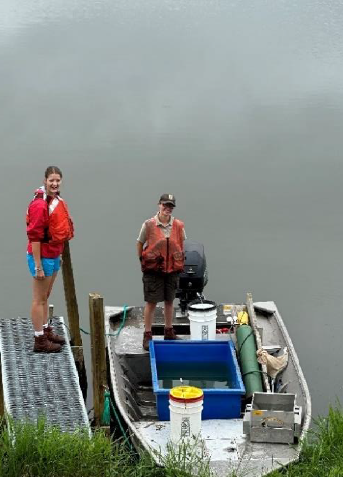Fathead minnow fingerlings are used throughout the year as a forage base to feed hatchery captive broodstock as well as advanced growth largemouth, smallmouth, and walleye. These species feed on zooplankton and invertebrates as their primary food source when they are first stocked into hatchery ponds, as these fish grow, they switch to larger forage items, hence hatchery fathead minnows are stocked into ponds as their secondary food source. Prior to 2003, the bulk of fathead minnows used on station were purchased from private bait dealers in the area. This method was discontinued due to the risk of transmitting many unknown diseases from wild populations of fish to hatchery fish and to eliminate the risk of nuisance species such as brook stickleback. A fathead minnow brood line was developed at Genoa to prevent disease transfer and to reduce costs associated with the purchase of the wild baitfish.
In early spring approximately 50 gallons of broodstock fathead minnows are stocked into a 34-acre pond. During the summer these fish will spawn multiple times producing millions of new young of year fathead minnows. By mid-July, fathead minnows can be trapped using specially constructed minnow traps baited with dog food. This method results in variable catches of minnows per day using cloverleaf traps. The traps are available in a variety of mesh sizes to target different sizes of minnows. Hatchery staff irregularly set cloverleaf minnow traps around the pond by boat. Two people are required during the collection, a boat driver and another situated on the bow that can grab the float of each trap. The traps are emptied into an oxygenated 50-gallon tub filled with pond water in the center of the boat. After all the traps are collected and reset, the fathead minnows are transferred to a distribution truck and then to production ponds where minnows are measured by gallon and fed to production fish.
By: Orey Eckes

YCC student and staff getting ready to collect minnows in their boat. Photo: USFWS.
